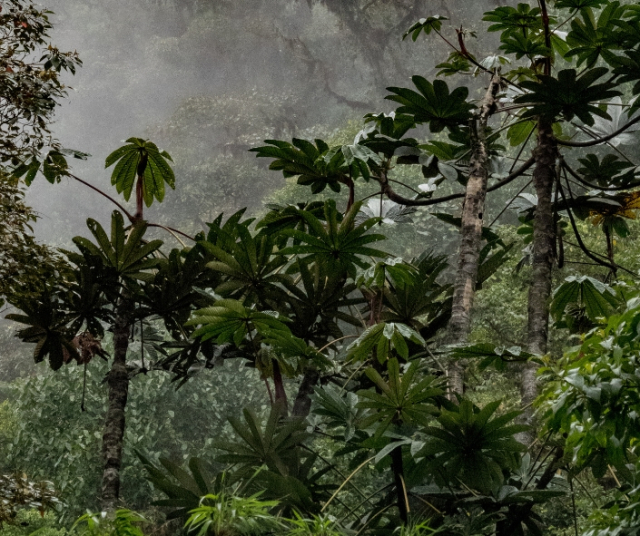Ecuador, a country located in the heart of South America, is a true botanical paradise that is home to an astonishing variety of ecosystems and a rich diversity of flora. From the rainforests of the Amazon to the snow-capped peaks of the Andes and the stunning Galapagos Islands, each region of Ecuador is infused with unique and fascinating botanical exuberance. In this article, we will explore the incredible diversity of Ecuadorian flora, highlighting some of the most iconic and characteristic plants found in this botanical wonderland.
The Amazon rainforest: A treasure of plant biodiversity.
The Ecuadorian Amazon rainforest is one of the most biodiverse regions in the world, and is home to an incredible variety of plants adapted to its humid, tropical environment. Among the most emblematic species are:
Bromeliads (Bromeliaceae)
Bromeliads are epiphytic plants found on trees and rocks in the Amazon rainforest. With their funnel-shaped leaves and colorful flowers, these plants are an important source of food and shelter for a variety of animals, including frogs, insects and birds.
Lianas and creepers.
Lianas and vines are a distinctive feature of the Amazon rainforest, where they wrap around trees and form intricate webs that span the forest canopy. These plants play a crucial role in the structure and ecology of the rainforest, providing support and habitat for a wide variety of organisms.
Heliconias (Heliconia spp.)
Heliconias are tropical plants found in the humid forests of the Amazon rainforest. With their bright inflorescences and lush leaves, these plants are a common sight in forest glades and provide food and shelter for a variety of birds and mammals.
The Andes: Gardens of heights and colors.
The Ecuadorian Andes mountains are home to a great diversity of flora, adapted to the harsh conditions of altitude and climate. Among the most notable species are:
Frailejones (Espeletia spp.)
Frailejones are emblematic plants of the Andean moors, where they form extensive golden fields that extend along the slopes of the mountains. These cold-adapted plants are important water regulators and provide habitat and food for a variety of animals.
Orchidaceae (Orchids)
Ecuador is one of the countries with the greatest diversity of orchids in the world, and many of these beautiful flowers can be found on the slopes of the Andes. From small, delicate terrestrial orchids to spectacular epiphytic species hanging from trees, these plants captivate with their beauty and diversity.
Polylepis spp.
These trees, known as "paper trees," are a distinctive feature of the cloud forests of the Ecuadorian Andes. Adapted to the harsh conditions of altitude and climate, Polylepis trees provide food and shelter for a variety of birds and mammals.
The Galapagos Islands: A World Apart
The Galapagos Islands, located in the Pacific Ocean off the coast of Ecuador, are famous for their unique biodiversity and endemic species. Among the most characteristic plants are:
Scalesia spp.
These endemic trees of the Galapagos Islands are a common sight in the forests of the islands. With their long, green leaves and white or yellow flowers, Scalesia spp. They are an important part of the islands' ecosystem and provide food and shelter for a variety of animals.
Palo Santo (Bursera graveolens)
This aromatic tree is native to the Galapagos Islands and is known for its fragrant wood and its use in traditional medicine. The Palo Santo is a protected species on the islands due to overexploitation and the destruction of its habitat.
Conservation and protection: Challenges and opportunities.
Despite its rich biodiversity, Ecuador's flora faces a number of threats, including deforestation, climate change and overexploitation. However, there are also opportunities for the conservation and protection of these valuable natural resources. Through the creation of protected areas, the promotion of sustainable practices, and the encouragement of ecotourism, Ecuador is working to preserve its rich botanical heritage for future generations.
Ecuador's flora is truly astonishing in its diversity and beauty, and plays a vital role in maintaining the country's ecosystems. From the lush Amazon rainforest to the heights of the Andes and the stunning Galapagos Islands, every corner of Ecuador is infused with the exuberance of plant life. By celebrating and protecting this incredible diversity, we can ensure a brighter, more sustainable future for generations to come and for the planet as a whole.
